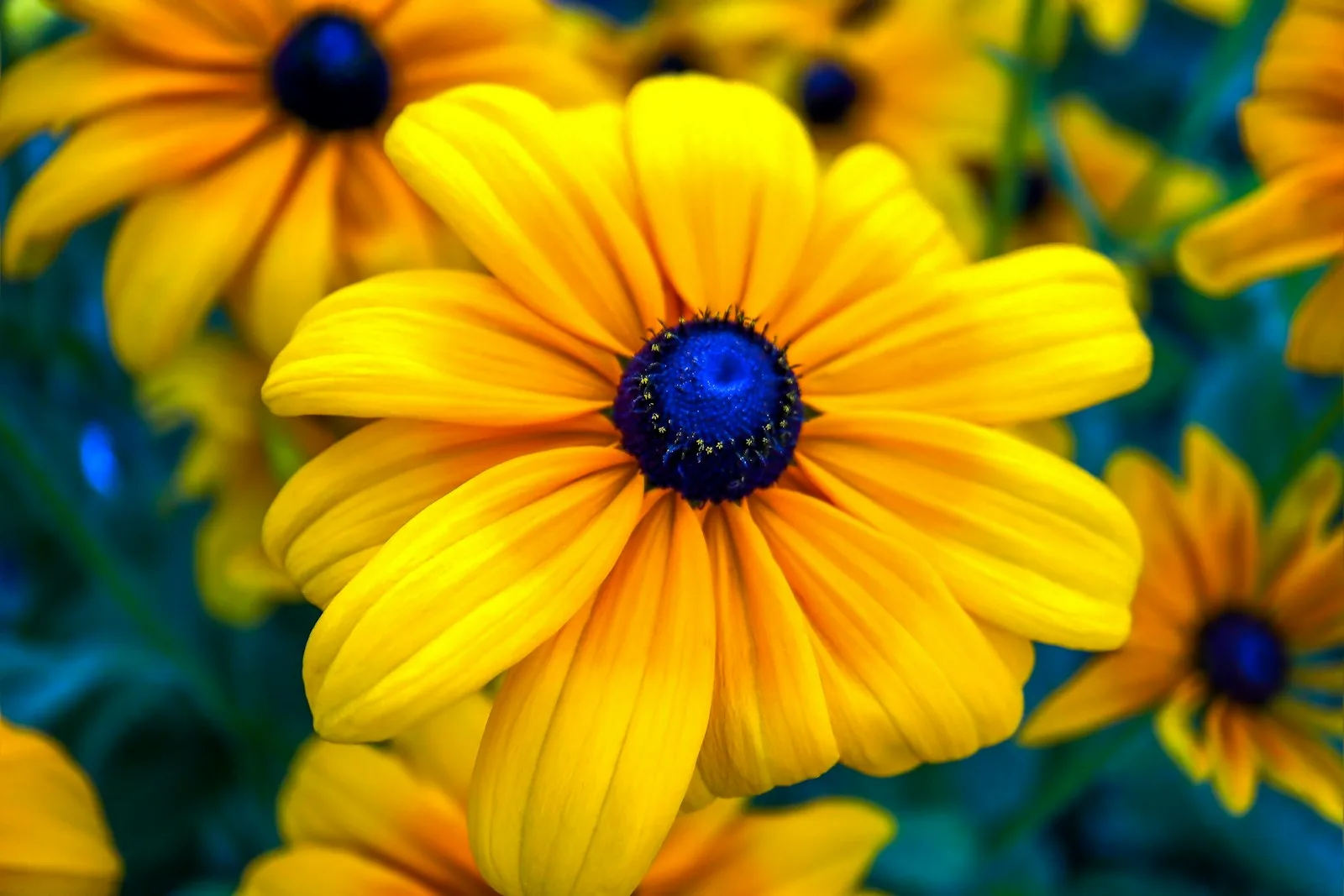Table of Contents
The dark core of black-eyed Susans’ daisy-like flower heads gives rise to their name. The plant’s vivid petals, which are usually yellow but can also be warm tones of orange, gold and red, contrast sharply with the plant’s “black eye”.
Black-eyed Susans are a great addition to any wildlife garden design because they attract a variety of pollinators, so planting them will benefit your landscape beyond adding color and impact during their long flowering season.
In US hardiness zones, hardy 3-9 black-eyed Susans are available as both annuals and perennials. The most well-known of these is Rudbeckia hirta, a short-lived perennial that is typically planted as an annual to adorn beds and borders with vivid, long-lasting flowers.

Why grow black-eyed Susans in your garden
Black-eyed Susans are very adaptable and are available in a wide range of colors and sizes to suit any backyard design. Plants can also be grown in flower beds, raised beds, container gardens,or as a component of a butterfly garden to produce amazing pollinators.
According to Rebecca Sears, horticulturist at Ferrie-Morse, “This flower is excellent for planting as a ground cover, and can help cover trellis or unsightly tree stumps used as a support for plants such as vines.” Additionally, it provides a consistent supply of nectar and pollen, attracting beneficial pollinators like bees to your garden during the summer blooming season.
Perennial black-eyed Susans will die back each winter to start growing again in spring. Varieties grown as annuals are also known to self-seed around the garden to spread and grow new plants in flower beds year after year.
How to grow black-eyed Susan

You can plant black-eyed Susan plants from seed or buy them in containers at nurseries, garden stores, or online. It is advisable to sow the seeds indoors to start the season and have the plants ready to go outside after the danger of frost has passed.
Hope Flower Farm owner and floral designer Holly Heider Chapple, advises starting plants in trays or pots to “establish a good root structure before planting outside.”
Depending on your US hardiness zone, the optimal time to start indoor seeding will be. Six to eight weeks before your last frost is the best time. In warmer areas, this means you can spread flower seeds in February; In cooler climates, however, you may want to plant flowers in April.
Bloom & Bounty owner and flower gardener Meredith Bishop agrees that black-eyed Susan seeds should be started indoors. “You can better control the spacing of the garden by planting,” she adds.
When planting black-eyed Susans in the backyard after all danger of frost has passed, plants should be spaced 18 inches apart, regardless of whether they are store-bought or raised from seed.
Shop Black-Eyed Susan Seeds

Rudbeckia Hirta Seeds
Rudbeckia hirta seeds provide a spectacular burst of color and a steady source of pollen and nectar to support bees and other pollinators.

Cherry brandy seeds
Cherry Brandy has 3-4 inch semi-double cherry red flowers and a small, neat variety that is 18-24 inches tall. An alternative to the traditional golden yellow black-eyed Susan, it’s deep and smoky.
Where to plant black-eyed Susan

Black-eyed Susans like 6 to 8 hours of full light per day, so they grow best in a sunny spot in your backyard. Although they are not shade-loving plants, they can cope with some shady areas in the garden. If you’re growing them as pollinator-attracting container plants, place your pot in the brightest spot in the backyard and they’ll bloom profusely.
Plants like a type of soil that drains well and is rich. Drainage should be your first priority when caring for black-eyed Susans, as they do not do well when sitting on moist soil. If your soil is heavy, you can increase its drainage and structure by adding organic matter.
For container planting, you should fill pots with well-draining potting soil (you can get this potting mix for outdoor containers on Amazon). The high level of drainage and aeration found in such pre-prepared potting soil promotes strong roots and healthy growth of potted plants. Reusing old potting soil in new containers or using garden soil in pots will keep the soil moist over time.
Black-eyed Susan plant care tips

Black-eyed Susans require relatively little care, which is great news. After planting and during the first few weeks of development, they need to be watered frequently; But, after that, they can tolerate some drought. According to Rebecca Sears, black-eyed Susans only need “an inch to two inches of water per week.” “Make sure to keep the soil moist and use a moisture meter to monitor how much water your flowers are getting,” she advises.
Read | Master the Weed Wars: 12 Common Offenders and How to Crush Them


2 thoughts on “5 Way to Plant Black-Eyed Susans to Enjoy Many Months of Attractive Flowers”